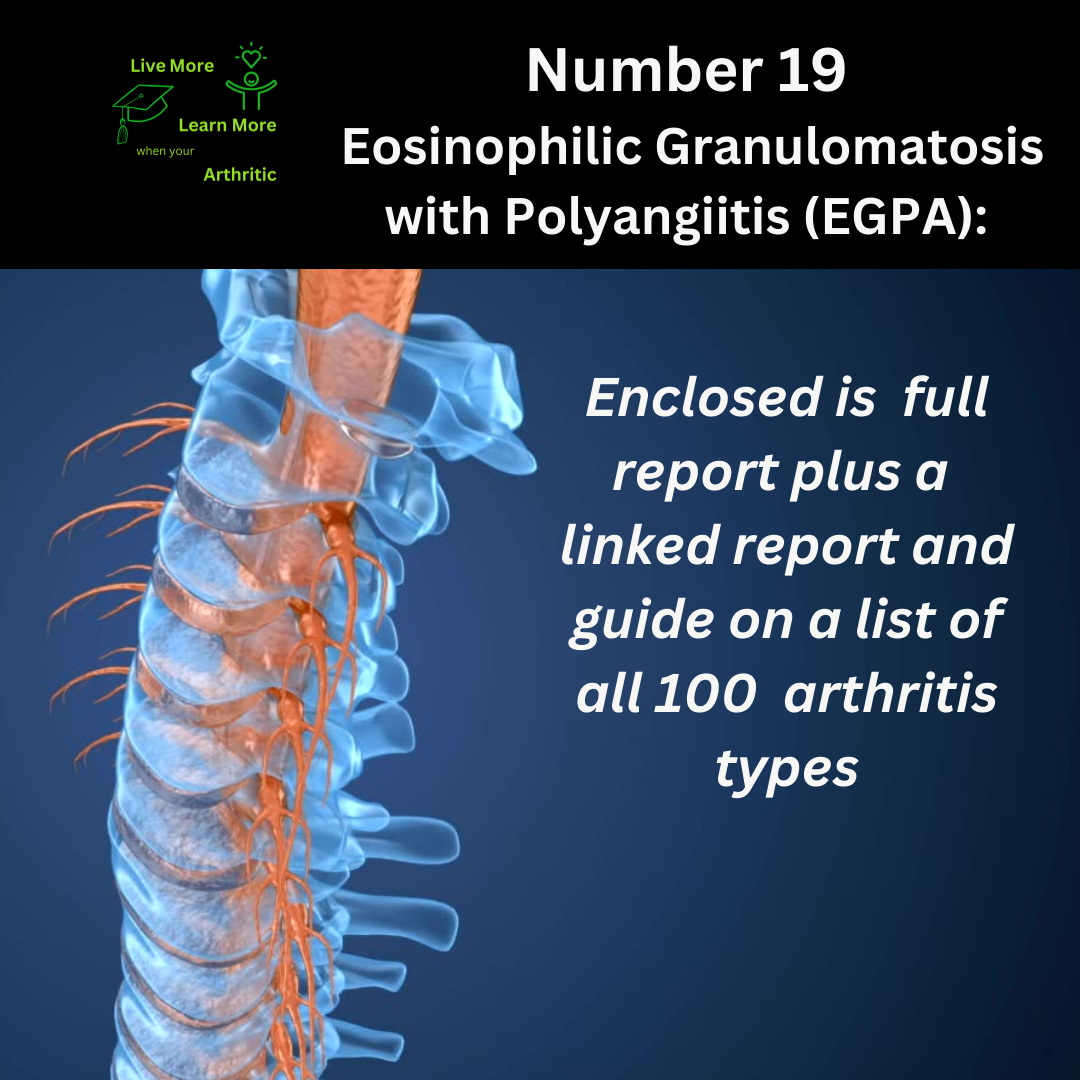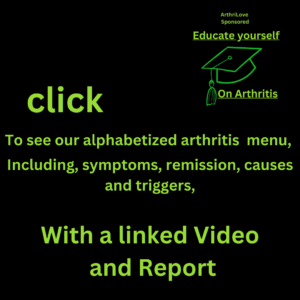
Eosinophilic Granulomatosis with Polyangiitis (EGPA): Number 19 on the list of 100 types of Arthritis
Unveiling Eosinophilic Granulomatosis with Polyangiitis (EGPA): A Journey of Resilience
Imagine waking up one day to find your body staging a rebellion—blood vessels inflamed, lungs protesting, and a mysterious condition named EGPA taking center stage. This is the reality for those navigating the intricate dance of this rare but impactful syndrome.
 Description of Eosinophilic Granulomatosis with Polyangiitis (EGPA)
Description of Eosinophilic Granulomatosis with Polyangiitis (EGPA)
EGPA, formerly known as Churg-Strauss Syndrome, is a form of vasculitis characterized by inflammation of blood vessels, particularly small to medium-sized vessels. This inflammation can affect multiple organs, including the lungs, skin, nerves, and gastrointestinal tract, resembling a symphony of immune responses gone awry.
Causes and Triggers
The exact trigger behind EGPA remains elusive, but it’s believed to involve a complex interplay of genetic predisposition and environmental factors. Allergens, infections, or medications may act as catalysts, setting off the cascade of immune dysfunction.
Symptoms and Challenges
EGPA doesn’t adhere to the script of typical health challenges. Picture joint pain and stiffness that turn everyday movements into a delicate balancing act. Limited range of motion becomes a reminder of the body’s intricate dance with inflammation.
Age of Onset and Prognosis
EGPA often emerges in adulthood, typically between the ages of 30 and 50, although it can occur at any age. The prognosis varies, with early diagnosis and proactive management playing pivotal roles in shaping outcomes.
Quality of Life and Proactive Management
Can you reclaim your vitality and embrace a higher quality of life with EGPA? Absolutely! A proactive approach is paramount. This includes forging a strong partnership with healthcare providers, adopting lifestyle modifications like regular exercise and stress reduction, and cultivating resilience through supportive networks.
Complications and Beyond
EGPA can introduce a myriad of complications, from lung damage due to inflammation to potential nerve involvement leading to sensory disturbances. Regular monitoring and prompt intervention are essential to mitigate risks and optimize overall health.
 Holistic Discoveries and Hopeful Insights
Holistic Discoveries and Hopeful Insights
In the pursuit of well-being, some have explored holistic avenues—think dietary adjustments, mindfulness practices, or complementary therapies like acupuncture. While scientific validation is ongoing, these natural approaches offer promising adjuncts to conventional care.
The Interconnected Web of Health
EGPA isn’t an isolated chapter in one’s health narrative. It’s often linked with other autoimmune companions like asthma or allergic rhinitis, forming a complex tapestry of interconnected conditions. Understanding these relationships can inform treatment strategies and holistic wellness approaches.
In the face of EGPA, each day becomes a testament to resilience and adaptability. By arming oneself with knowledge, embracing a proactive mindset, and finding moments of levity amidst challenges, individuals affected by this condition can navigate its complexities with grace and determination. After all, the human spirit is the ultimate storyteller in the saga of well-being.